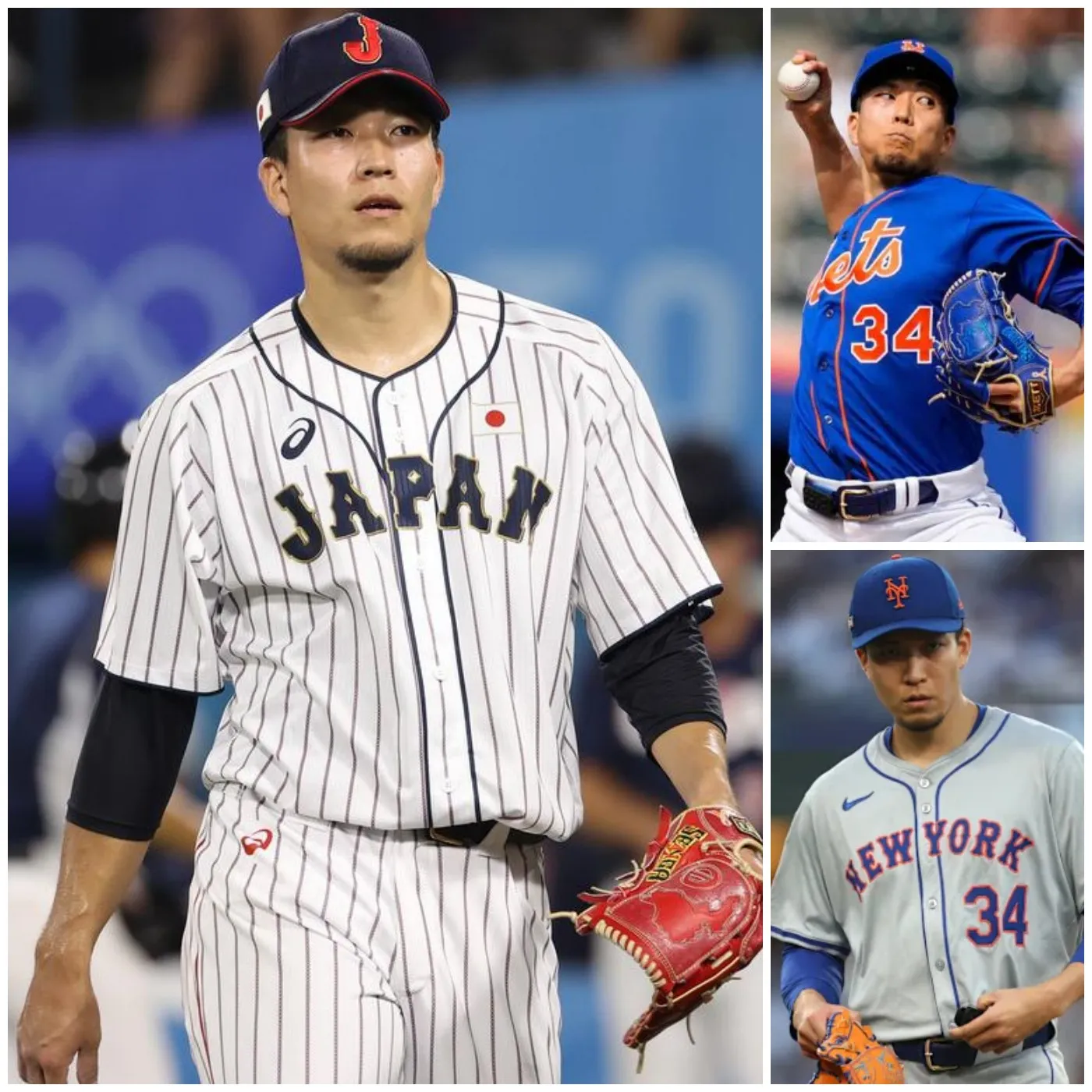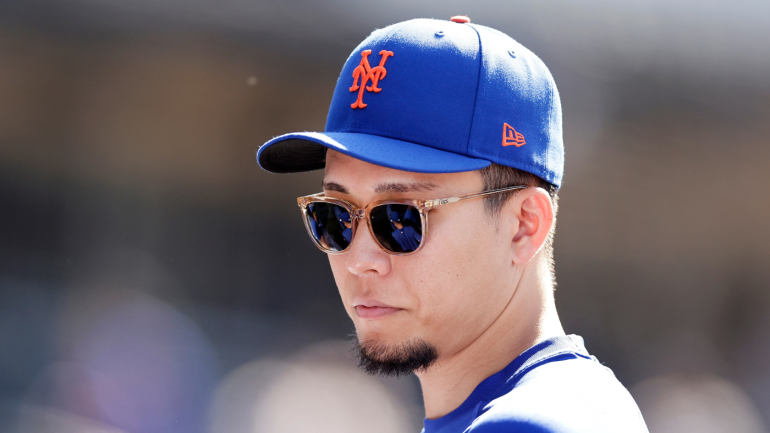Senga Redefines MLB Pitching, Determined to Build a New Era of Basketball
The transition from Nippon Professional Baseball (NPB) to Major League Baseball (MLB) is no easy feat, and Kodai Senga is learning that firsthand. After establishing himself as one of Japan’s premier pitchers with the Fukuoka SoftBank Hawks, the talented right-hander made the jump to the MLB with high expectations. However, like many international players before him, […]

The transition from Nippon Professional Baseball (NPB) to Major League Baseball (MLB) is no easy feat, and Kodai Senga is learning that firsthand. After establishing himself as one of Japan’s premier pitchers with the Fukuoka SoftBank Hawks, the talented right-hander made the jump to the MLB with high expectations. However, like many international players before him, Senga has faced challenges adapting to the style and level of competition in the MLB. So, what has been the most significant hurdle for Senga in his transition, and can he overcome it?
The Ghost Fork and Senga’s Pitching Arsenal
One of the main reasons Kodai Senga attracted so much attention before his MLB debut was his signature Ghost Fork pitch, a forkball known for its dramatic drop that often leaves batters helpless. This pitch, along with his powerful fastball, earned him comparisons to some of the most dominant pitchers in baseball. In his early outings, Senga showcased his ability to deceive batters with the Ghost Fork, and many thought his transition to the MLB would be smooth sailing, given the effectiveness of his signature pitch.

However, while his Ghost Fork has undoubtedly been a weapon in his arsenal, it’s clear that the MLB is a different beast. American hitters are often more disciplined and better at adjusting to pitchers’ tendencies than their NPB counterparts. In Senga’s case, this has meant that while his pitching repertoire may have been enough to dominate in Japan, the adjustments needed to thrive at the highest level of baseball are significant.
Adjusting to American Hitters’ Approach
The most significant hurdle Kodai Senga has encountered in the MLB is undoubtedly adjusting to the approach of American hitters. In the NPB, pitchers often face batters with a different mindset and less aggressive offensive strategies than in the MLB. In Japan, pitchers like Senga can often rely on precise placement and their repertoire of pitches to control the game. However, in the MLB, hitters tend to be more aggressive, with many looking to attack early in the count, especially against pitchers who may be unfamiliar to them.
This aggressive approach has made it harder for Senga to dominate in the same way he did in Japan. As he adjusts to the MLB game, he must find ways to effectively counteract this more aggressive style of hitting, which often means being more unpredictable and fine-tuning his pitch selection and timing.
For instance, many hitters in the MLB are more adept at recognizing pitch patterns and adjusting to them quickly. Senga’s fastball has been effective in NPB, but MLB batters can sometimes catch up to it, especially when they have more data on his pitch tendencies. Therefore, Senga has had to adjust his game, learning to mix his pitches better and keep hitters off balance, particularly when facing teams with more sophisticated scouting reports.
Control: A Key Area for Improvement
Another area that has been a struggle for Kodai Senga as he adapts to the MLB is his control. While his fastball and Ghost Fork are effective when thrown in the strike zone, Senga has been inconsistent at times with his command. In NPB, pitchers can often get away with more mistakes, especially against batters who are less likely to punish those mistakes. However, MLB hitters are known for their ability to make adjustments, and Senga has been forced to confront that reality.
In several of his outings, Senga has struggled with his walks and overall command. While his strikeouts are high, his inability to consistently find the strike zone has led to costly walks and a higher pitch count, ultimately affecting his ability to go deep into games. This inconsistency in control is something he will need to address if he is to become a reliable starter in the MLB. Without pinpoint control, hitters can make Senga pay for his mistakes, something that has become evident in his early performances.
Can Senga Overcome These Growing Pains?
Despite the struggles, there’s no doubt that Kodai Senga has the potential to overcome these growing pains. His raw talent is undeniable, and his experience in Japan has given him the mental fortitude to handle the pressure of playing in the MLB. However, the adjustments he needs to make, particularly in terms of pitch control and game strategy, are critical for his success moving forward.
If Senga can continue to refine his control and adjust his approach to counteract the aggressive tendencies of MLB hitters, there’s no reason to believe that he cannot become a top-tier starter in the league. His Ghost Fork, when thrown effectively, is still a weapon that sets him apart from many pitchers in the MLB. With time, he could master the art of keeping hitters off balance and utilize his fastball and other pitches more effectively.

Looking Ahead: Senga’s Future in MLB
The road ahead for Kodai Senga is filled with challenges, but it’s also paved with opportunity. The growing pains he’s experiencing in his MLB debut season are common for many international players who transition from leagues with different playing styles. While his current inconsistency might be frustrating at times, Senga’s ability to adjust and improve over the course of the season will be crucial in determining whether he can live up to the expectations placed on him.
As he gains more experience and faces different teams, Senga will continue to evolve. His pitch repertoire and his ability to make adjustments will likely improve, allowing him to become a more reliable presence in the New York Mets’ rotation. The combination of his raw talent, coupled with the lessons he learns along the way, will ultimately determine whether Senga can overcome the challenges of MLB and become the pitcher many believe he can be.
Kodai Senga’s transition to the MLB has been a journey filled with ups and downs, but it’s far from over. The biggest hurdles so far have been adjusting to the more aggressive MLB hitters and improving his pitch control. If he can continue to make adjustments and refine his approach, there’s no reason he can’t live up to the expectations set before him. Senga’s future in MLB remains bright, and with time, he may prove that his NPB success is only the beginning of his career as an elite MLB pitcher.










































